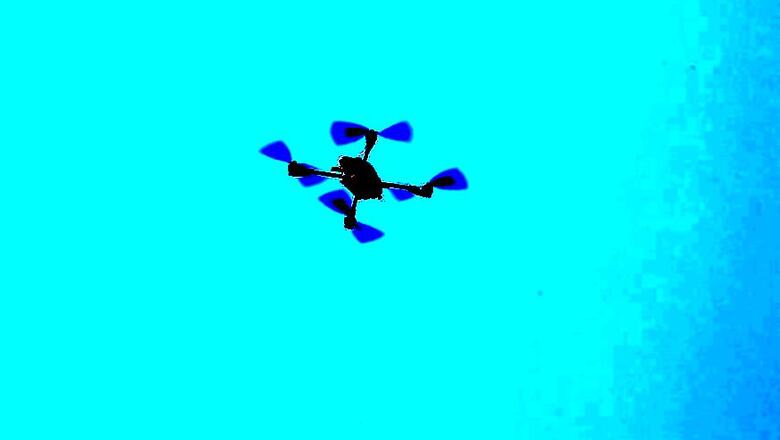
views
Harvard scientists have developed a next-generation hybrid RoboBee that can fly, dive into water, swim, propel itself back out of the water, and land safely. The RoboBee is 1,000 times lighter than any previous aerial-to-aquatic robot, and could be used for numerous applications, from search-and-rescue operations to environmental monitoring and biological studies, researchers said. New floating devices allow the multipurpose air-water micro-robot to stabilise on the water's surface before an internal combustion system ignites to propel it back into the air, they said. "This is the first micro-robot capable of repeatedly moving in and through complex environments," said Yufeng Chen, a former graduate student at the Harvard John A Paulson School of Engineering and Applied Sciences (SEAS) in the US.
"We designed new mechanisms that allow the vehicle to directly transition from water to air, something that is beyond what nature can achieve in the insect world," said Chen, first author of the research published in the journal Science Robotics. By combining theoretical modelling and experimental data, the researchers found the Goldilocks combination of wing size and flapping rate, scaling the design to allow the bee to operate repeatedly in both air and water. Using this multi-modal locomotive strategy allowed the robot to flaps its wings at 220 to 300 hertz in the air and nine to 13 hertz in water. The researchers retrofitted the RoboBee with four buoyant outriggers - essentially robotic floaties - and a central gas collection chamber. Once the RoboBee swims to the surface, an electrolytic plate in the chamber converts water into oxyhydrogen, a combustible gas fuel.
"Because the RoboBee has a limited payload capacity, it cannot carry its own fuel, so we had to come up with a creative solution to exploit resources from the environment," said Elizabeth Farrell Helbling, a graduate student in the Microrobotics Lab at SEAS. "Surface tension is something that we have to overcome to get out of the water, but is also a tool that we can utilise during the gas collection process," said Helbling. The gas increases the robot's buoyancy, pushing the wings out of the water and the floaties stabilise the RoboBee on the water's surface, researchers said. From there, a tiny, novel sparker inside the chamber ignites the gas, propelling the RoboBee out of the water. The robot is designed to passively stabilise in the air so that it always lands on its feet, they said.
Don't forget to subscribe to our YouTube Channel
Also Watch: Apple iPhone X First Look



















Comments
0 comment